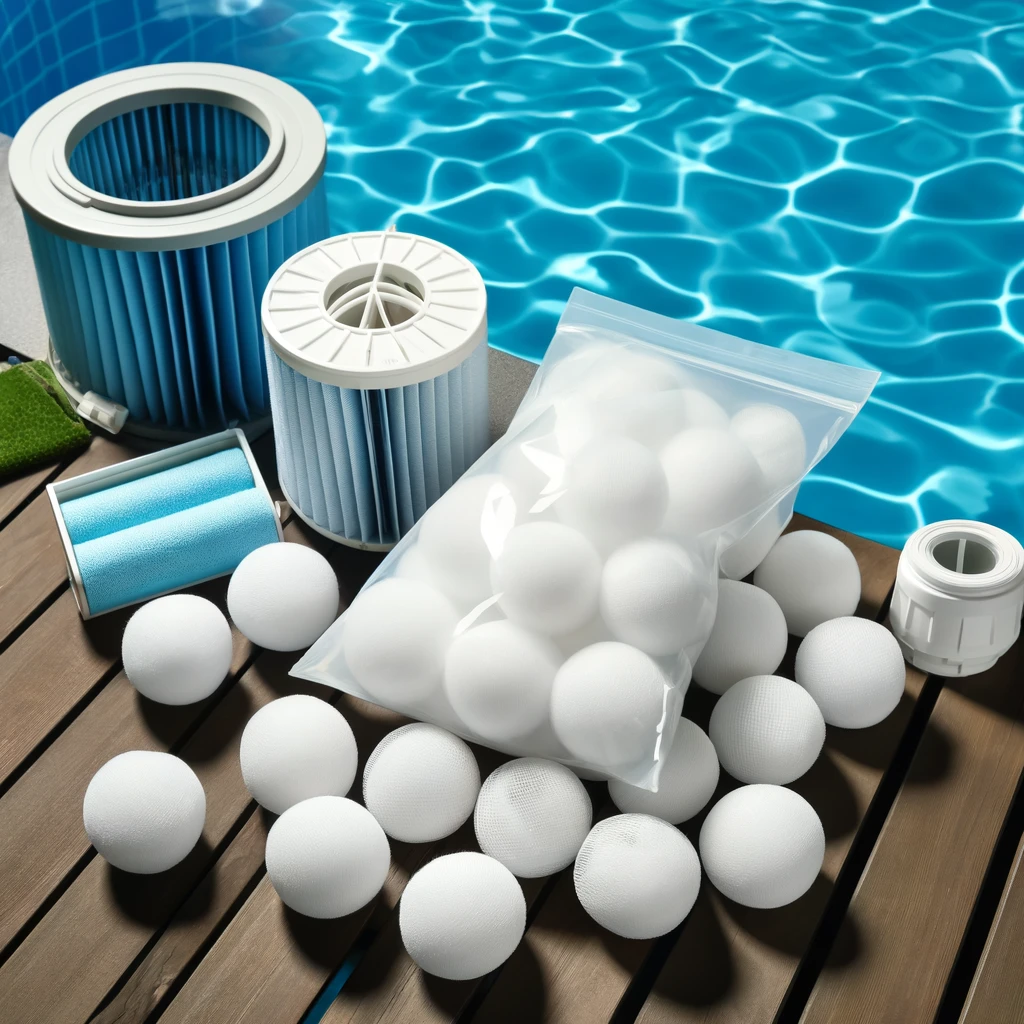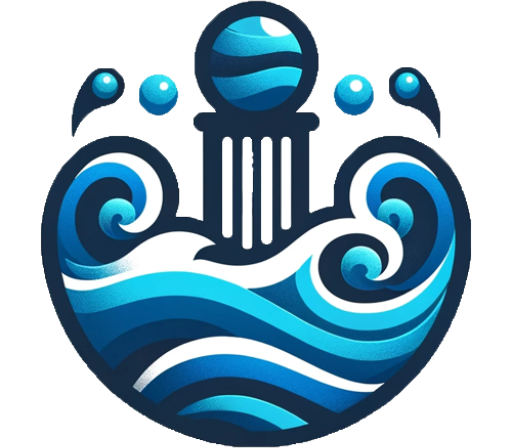Have you ever wondered how to perfectly pair pool filter balls with other pool equipment to achieve the best filtration results? In this article, we’ll provide you with a detailed explanation of how to optimize your pool filtration system through proper equipment pairing. Ready to dive in? Let’s get started!

The Advantages of Pool Filter Balls
Before we discuss how to pair equipment, let’s first look at the unique advantages of pool filter balls.
Efficient Filtration
Compared to traditional sand filters, pool filter balls can capture finer debris, ensuring clearer water. Their unique material and structural design allow them to effectively filter particles as small as a few microns.
Easy Maintenance
Unlike traditional sand filters, pool filter balls are easier to clean and replace. You only need to take them out and clean them periodically without the complicated backwashing process, significantly reducing overall maintenance costs.
Eco-Friendly and Energy Saving
Using pool filter balls can significantly reduce water and chemical usage because their high filtration efficiency lowers the frequency of water circulation, saving energy and resources.
Perfect Pairing: Pool Filter Balls and Pumps
To keep your pool water clear, choosing the right pump to pair with pool filter balls is crucial.
Choosing a Pump
When selecting a pump to pair with pool filter balls, consider the following points:
- Flow Rate and Head: The pump’s flow rate and head must match the requirements of the filter ball system to ensure smooth water circulation.
- Energy Efficiency: A high-efficiency pump not only reduces operating costs but also complements the eco-friendly nature of filter balls.
- Noise Level: A low-noise pump enhances user comfort, especially in residential pools.
Pump Installation and Maintenance
Ensure the pump’s installation location is well-ventilated to prevent overheating and affecting its lifespan. Regularly check the pump’s operation, clean the impeller and filter, and ensure it runs efficiently.
Perfect Pairing: Pool Filter Balls and Heaters
For users who want to use their pool year-round, a heater is indispensable. Pairing pool filter balls with a heater can effectively improve water quality and user experience.
Choosing a Heater
- Type: Common pool heaters include electric, gas, and solar heaters. Choose the one that suits your pool size and usage needs.
- Power: The heater’s power should be selected based on the pool volume and desired heating speed to ensure it reaches the required temperature quickly.
- Energy Efficiency: A high-efficiency heater reduces energy consumption, perfectly complementing the eco-friendly nature of pool filter balls.
Heater Installation and Maintenance
The heater should be installed after the filter ball system to ensure the water is thoroughly filtered before entering the heater, reducing scale and debris damage. Regularly clean the heater’s heat exchanger to maintain its efficiency.
Perfect Pairing: Pool Filter Balls and Automatic Cleaning Devices
Automatic cleaning devices are an important part of modern pool maintenance. Pairing them with pool filter balls can achieve more efficient cleaning results.
Choosing an Automatic Cleaning Device
- Type: Common automatic cleaning devices include vacuum cleaners, robotic cleaners, and wall-mounted cleaners. Choose the one that suits your pool’s size and shape.
- Features: Devices with multiple cleaning modes and intelligent path planning can cover pool areas more comprehensively, improving cleaning efficiency.
- Compatibility: Ensure the cleaning device is compatible with the pool filtration system to avoid performance degradation due to improper connections.
Using and Maintaining Automatic Cleaning Devices
Regularly check and clean the filters and brushes of automatic cleaning devices to ensure they work properly. During use, avoid letting foreign objects enter the device, affecting its cleaning performance.
Lifespan and Replacement of Pool Filter Balls
Many people ask, how long do pool filter balls last? Typically, high-quality pool filter balls can last 2 to 3 years, but their exact lifespan depends on usage frequency and maintenance.
When to Replace Filter Balls
Regularly check the condition of the filter balls and replace them if you notice deformation, damage, or a significant decline in filtration efficiency. Follow the user manual or professional advice for proper installation of new filter balls.
Steps to Replace Filter Balls
- Shut Down: Turn off the pump and filtration system to ensure safe operation.
- Disassemble: Open the filter and remove the old filter balls.
- Clean: Clean the inside of the filter to remove any residual debris.
- Install New Filter Balls: Evenly fill the filter with new filter balls, ensuring no gaps.
- Restart the System: Restart the pump and filtration system and check the new filter balls’ operation.
Comparing Pool Filter Balls and Sand Filters
Many people may ask, are pool filter balls better than sand? While both have their advantages, filter balls perform better in many aspects.
Filtration Efficiency
Pool filter balls have higher filtration precision than sand filters, capturing smaller particles and ensuring clearer water.
Easy Maintenance
Compared to sand filters, which require regular backwashing, filter balls are easier to maintain and only need periodic cleaning, significantly reducing maintenance workload and water usage.
Eco-Friendly and Energy Saving
Using filter balls reduces water and chemical usage, minimizing environmental impact and saving operating costs.
Conclusion
If you’re considering how to optimize your pool filtration system, why not try pool filter balls? Cotton balls in pool filter are an efficient, eco-friendly, and easy-to-maintain option. By pairing them with suitable pumps, heaters, and automatic cleaning devices, you can achieve clearer pool water, less maintenance work, and a better user experience. Act now and choose the right equipment to keep your pool in top condition in any season!

 Instant
Quote
Instant
Quote Email
Us
Email
Us